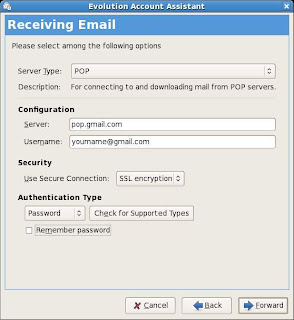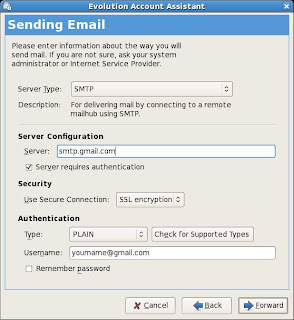:0 * conditions, if any | your-script-here
Obviously, you are not restricted to Perl or shell scripts. Anything you can run from a Unix command prompt can be run from Procmail.

hping2 -a 192.168.1.1 10.0.0.1 -p 1000At the same time, log into the firewall and run the following commands (example with internal network interface etho and external network interface eth1)


To turn answers to icmp_echos (ping) off, as root type:
echo 1 > /proc/sys/net/ipv4/icmp_echo_ignore_all
and to turn it on again type:
echo 0 > /proc/sys/net/ipv4/icmp_echo_ignore_all
DNS server is one of the most targeted application for attack, It’s always a good idea to hide your DNS server version information so that BAD guys cannot view the version and start the attack to this specific version of your DNS server (Bind).
To hide your version of bind, add the following value to named.conf in the options section section as follows:
options {
directory “/var/named”;
version “[SECURED]”;
};

 | (ODG vol.3) | sources
| (ODG vol.3) | sources

sudo dpkg-reconfigure xserver-xorg
Go through this wizard and at the part where you have to select the drivers(vesa will be the default one) press the up arrow button and go up to select the fglrx drivers.su rootinit 3cd /path/to/where/driver/is/savedsh NVIDIA-Linux----.run
nvidia-xconfig --composite
nvidia-xconfig --render-accel
nvidia-xconfig --add-argb-glx-visuals -d 24

sudo apt-get install apache2The installing process will not only install, but also start up the web server.
Dubbed "Mebroot," the rootkit infects the master boot record (MBR), the first sector of a PC's hard drive that the computer looks to before loading the operating system. Since it loads before anything else, Mebroot is nearly invisible to security software.
"You can't execute any earlier than that," F-Secure's chief research officer, Mikko Hypponen, said.
Once a machine is infected, the hacker controlling the rootkit has complete control over the victim's machine, opening up the potential for a variety of other attacks.
init phase. The script will run in background and collect process information, CPU statistics and disk usage statistics from the /proc file system. The performance data are stored in memory and are written to disk once the boot process completes.
If you do not wish to use a boot loader, you have several alternatives:
You can load Linux from MS-DOS. Unfortunately, this requires a copy of the Linux kernel (and an initial RAM disk, if you have a SCSI adapter) to be available on an MS-DOS partition. The only way to accomplish this is to boot your Linux system using some other method (for example, from a boot CD-ROM) and then copy the kernel to an MS-DOS partition. LOADLIN is available from
ftp://metalab.unc.edu/pub/Linux/system/boot/dualboot/
and associated mirror sites.
SYSLINUX is an MS-DOS program very similar to LOADLIN. It is also available from
ftp://metalab.unc.edu/pub/Linux/system/boot/loaders/
and associated mirror sites.
You can load Linux using commercial boot loaders. For example, System Commander and Partition Magic are able to boot Linux (but still require GRUB to be installed in your Linux root partition).
Before installing GRUB, make sure to use the latest GRUB package available or use the GRUB package from the installation CD-ROMs.
Once the GRUB package is installed, open a root shell prompt and run the command /sbin/grub-install
/sbin/grub-install /dev/hda
The next time the system boots, the GRUB graphical boot loader menu appears before the kernel loads into memory.
"Over two years ago, the Linux USB developers stated that they believed there was no way to create a USB kernel driver that was not under the GPL. This patch moves the USB apis to enforce that decision."So, Just wait for 2.6.25 kernel release from kernel.org,


